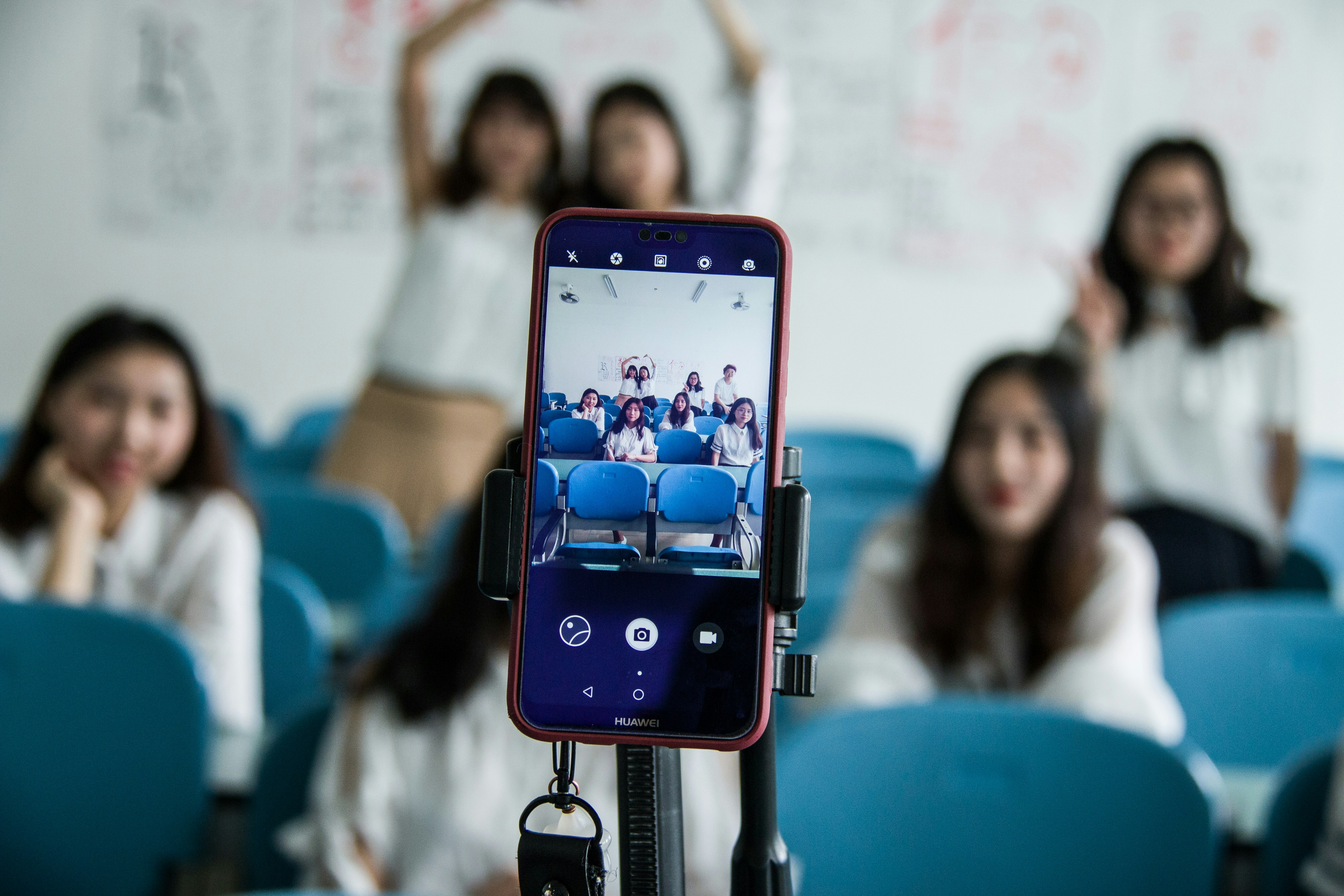12 Mobile Journalism Smartphone Reporting Tips
by WriteSeen
Unlock the full potential of your reporting endeavors with our essential mobile journalism smartphone reporting tips. In the fast-paced world of creativity, mobile devices are now indispensable tools.
From capturing sharp images to crafting compelling stories on-the-go, this article streamlines your journey with practical guidance for professionals and enthusiasts seeking authenticity in storytelling. Dive straight into enhancing the way you communicate through the power of your smartphone.
1. Choose the Right Smartphone
In mobile journalism, your smartphone is more than a device—it's your portable newsroom. Achieving top-notch reporting requires the right tool for the job. We’re diving into the essentials to help you pick the ideal smartphone. Let's talk about what makes a smartphone outstanding for journalism.
-
Camera Quality: A smartphone’s camera must capture every detail. Look for at least a 12-megapixel lens and dual-lens capabilities that offer greater depth. These features help you deliver striking visuals.
-
Battery Life and Storage: A robust battery keeps you ready during marathon reporting days. Aim for 4000mAh or more. Storage isn’t just about capacity—it's about safety. Devices with 128GB of internal storage or expandable options ensure you’re prepared for extended coverage.
-
Durability: Rugged conditions can't stop you if your device sports a high IP rating against water and dust. It’s peace of mind when you're out in the elements.
Choose smart, and make your smartphone a reliable partner. Each feature strengthens your reporting backbone, letting you tell the stories that matter most.
2. Invest in Essential Accessories
Accessories can take your smartphone reporting from good to game-changing. The right tools offer stability, clarity, and accessibility, allowing you to produce professional-quality content swiftly.
-
Tripods and Gimbals: For stability, these are your go-tos. Tripods are optimal for static scenes, while gimbals provide dynamic movement, reducing shake in your footage.
-
External Microphones: High-quality sound distinguishes amateur from professional. Use external mics to capture clear audio, important in noisy environments.
-
Portable Lighting: Don’t let poor lighting ruin your shot. Simple, portable lights maintain video quality day or night.
-
Power Banks: Stay powered. A reliable power bank extends your coverage capabilities, allowing you to shoot all day without interruption.
These accessories elevate your smartphone's capabilities, ensuring mobile stories come to life with vivid clarity and impact.
3. Master Camera Settings
Mastery of your smartphone’s camera settings can significantly enhance your journalism practice. Understanding how to optimize these settings for different scenarios is essential.
-
Exposure and ISO: Often, natural and varied lighting makes it tricky to get the perfect shot. Gaining control over exposure and ISO helps you adapt swiftly to changes in lighting.
-
Focus and White Balance: Ensure clarity with continuous autofocus; and adjust white balance for natural tones. Every frame should tell a compelling story without distractions.
-
Advanced Features: HDR and burst modes bring versatility. HDR aids in high-contrast situations while burst mode makes fast action easier to capture.
Perfect your settings to transform each shot into a statement of quality. This understanding lets you harness your smartphone’s full potential in capturing powerful narratives.

4. Leverage Mobile Editing Apps
Smartphones house potent editing capabilities—perfect for when you need to polish stories quickly and efficiently. Let's explore the power of mobile editing apps.
-
Features: With apps like LumaFusion or Adobe Premiere Rush, fast tweaking of clips, color adjustments, and transitions boosts engagement.
-
Platforms and Formats: Different platforms call for specific formats. Choose formats suited to where your audience resides. Seamlessly export and share across YouTube, Instagram, and beyond.
-
Skill Enhancement: These apps don’t just enhance content—over time, they refine your skill. In-app tutorials are your secret weapon in mastering technical processes.
With accessible editing utilities, present stories in a polished, professional manner. Fast and versatile edits bring your storytelling vision to life in minutes, not hours.
5. Build a Compelling Narrative
Even with the best equipment and skills, your story must resonate. Strong narratives connect and engage deeply—letting your voice come through clearly.
-
Structure and Delivery: Start with a hook that pulls your audience in. Ensure a coherent structure keeps them intrigued until the end.
-
Authenticity and Emotion: Layer your story with personal quotes, real human angles, and conflict to find resolution. Stories that resonate bring audiences closer, giving them a reason to return.
-
Use of Sound Bites: Carefully chosen sound bites add color and authenticity, enriching the narrative detail.
A compelling narrative carries your story further than mere facts—a blend that speaks directly to the heart of those who engage with it.
6. Utilize Social Media Platforms
In today’s digital age, social media isn’t optional—it's essential. It helps you broadcast stories and connect instantly with audiences globally. Here's how to make this a core part of your strategy.
-
Platform Specificity: Each platform has its strength—Instagram's visual appeal and Twitter's breakneck news speed. Tailor your content appropriately.
-
Engagement: Don’t broadcast. Interact—carry on dialogues in comment sections, host live sessions, and create polls.
-
Analysis and Refinement: Dive into metrics to continually refine your approach. Audience insights help you tailor content and pinpoint what resonates.
Social media, when used strategically, becomes your megaphone—expanding your reach, providing feedback, and strengthening audience connections. Let it transform how you deliver stories and engage globally.
7. Stay Updated with Technological Trends
Keeping pace with technology amplifies your reporting skill set. The world of journalism is ever-changing, and staying updated keeps you relevant in diverse environments.
-
Cutting Edge Developments: Investigate AI, AR, and VR to add layers to storytelling. They offer new dimensions of interaction.
-
Software Updates: Regular updates aren’t just about maintenance—they enhance capability and protect content. Your smartphone needs fresh software for peak performance.
-
Emerging Tools: Watch for trends that optimize your process. Blockchain for secure data, drone technology for fresh perspectives—stay open to innovation.
By staying updated, you ensure that every report you produce isn’t just timely but at the cutting edge of what’s possible. Embrace change, and let technology amplify your stories' impact.
8. Practice Ethical Journalism
Navigating the world of mobile journalism requires a commitment to ethics. It's not just about the stories you tell but how you tell them. Ethics ensure your stories build trust with your audience and respect those involved.
-
Accuracy and Verification: Your first duty is to get the facts straight. This means double-checking information before hitting publish. With the speed at which mobile journalism moves, accuracy is your strongest asset.
-
Respect and Privacy: Consent matters. Always seek permission when capturing people or events, especially in sensitive situations. Respect your subjects' privacy and consider their well-being in how you report their stories.
-
Balance and Fairness: Strive for unbiased reporting by giving voice to multiple perspectives. Balance isn't about presenting false equivalences; it's about revealing the full spectrum of a story.
-
Transparency: Be open about your processes and potential biases. Explain how you gathered your information, which builds transparency and trust with your audience.
Trust grows from the seeds of transparency and respect—nurture it to elevate your storytelling.
Ethical journalism isn't just a guideline; it's a necessity. It aligns with creating a trustworthy narrative, a hallmark of journalism that resonates and confirms credibility over time. This focus is integral to mobile reporting’s integrity in an age where misinformation can spread rapidly. Let ethics guide your journey.

9. Plan Ahead for Coverage
Effective coverage begins long before the camera rolls. It’s about preemptively understanding what you need to capture and how to do it. Planning empowers you to tell stories that are not only thorough but compelling.
-
Research and Background: Dive deep into your subject's background. Know the context, key players, and related incidents. This preparation provides a foundation that enriches your coverage and adds layers to your storytelling.
-
Shot Lists and Angles: Realize the shots you can't miss and the angles that add depth. A well-thought-out shot list keeps your coverage focused, ensuring every frame contributes to the narrative.
-
Contingency Plans: Equipment can fail, and plans can pivot. Have backups for your gear, and be ready to adapt to unforeseen circumstances without losing focus on your story's core.
By planning, you secure your story's framework. At WriteSeen, we're committed to fostering environments where creativity and preparedness meet. Whether through digital tools or collaborative networks, planning is the touchstone of quality journalism—turning potential challenges into seamless narratives.
10. Embrace Live Streaming
Live streaming channels the immediacy of mobile journalism directly to your audience. This real-time capability captures events as they unfold, making it a dynamic storytelling tool with immense potential.
-
Platforms for Engagement: Choose platforms that align best with your audience engagement goals. Facebook Live, Instagram Live, and YouTube are strong contenders, each offering the ability to reach and interact with diverse audiences efficiently.
-
Engagement Opportunities: During your stream, interact directly with your audience through comments and questions. These interactions personalize the experience, keeping viewers engaged and involved in the story's flow.
-
Preparation and Equipment: Ensure a stable internet connection and test your equipment before going live. Proper setup guarantees a smooth stream, allowing you to focus fully on content delivery.
The presence and immediacy of live streaming cut through delay and doubters, delivering stories right as they happen. At WriteSeen, we understand the unique power of capturing raw, live moments—stories that gain authenticity through direct viewer experience.
11. Optimize Smartphone Storage
Limited memory shouldn't be a barrier in mobile journalism. Your smartphone's storage determines how many stories you can capture before needing a break—so let’s make that space work effectively for you.
-
Cloud Storage Solutions: Regularly offload content onto cloud services such as Google Drive or Dropbox. This not only saves space but also allows you to access files from any device whenever you need them.
-
Organizing Efficiently: Keep your media files well-organized. Adopt a filing system using folders and tags to quickly find what you need without sifting through clutter.
-
Storage Expansion Options: Look into smartphones that offer expandable memory with microSD cards. This solution provides an instant storage boost without compromising the phone's functionality.
Efficient storage management ensures your smartphone is always ready to capture the next big story. It’s not just about tech, but about seamlessly keeping your creative flows unbroken. At WriteSeen, we celebrate the union of organization and storytelling, ensuring every byte counts towards your narrative success.
12. Network with Fellow Creators
Collaboration fuels creativity—a fundamental principle we champion at WriteSeen. Networking widens your horizon, introduces you to diverse perspectives, and leads to novel storytelling innovations.
-
Peer Collaboration: Engage with fellow creators through platforms like ours. Feedback from peers enriches your work by offering fresh insights and constructive critique.
-
Find Professional Allies: Connect with industry professionals. These relationships can open doors to new opportunities, providing both mentorship and potential collaborative ventures.
-
Community Engagement: Participate in forums and events. They offer fertile ground for idea exchange, skill development, and uncovering shared creative goals.
In the ecosystem of journalism, networks are nerve centers of innovation. By reaching out, you transcend what’s solitary, threading into a tapestry richer with perspective and potential. Here, community and creativity are more than words—they’re a living tradition.

The Evolution of Mobile Journalism
Mobile journalism is rewriting the narrative of real-time reporting. Understanding its evolution reveals the technology-driven milestones that have transformed storytelling.
-
Democratization of Media: The smartphone revolution made journalism accessible to more voices, reshaping the landscape by empowering citizen journalists.
-
5G and Real-Time Connectivity: The advent of 5G technology bolstered bandwidth, enabling high-quality live streams and rapid content sharing, making news more immediate and engaging.
-
Social Media Distribution: Platforms like Facebook, Instagram, and Twitter redefined how stories are consumed and shared. Instant, global dissemination brought geographical borders closer.
-
Technological Innovation: Advances in mobile camera technology and editing apps turned smartphones into powerful tools, rivaling traditional equipment.
-
Citizen Journalism Surge: Global events highlighted how mobile journalism could expand viewpoints and offer grassroots-level reporting never seen before.
-
Redefining News Consumption: As mobile connectivity enhances, consumption patterns change—news becomes a real-time conversation, not a bulletin.
Mobile journalism has become a testament to what's possible when technology and creativity intersect. It remains crucial to stay at the cutting edge, welcoming new innovations as they unfold.
Conclusion
Your smartphone is a veritable powerhouse for journalism, and these insights are your toolkit. Delve into every section, applying tips that propel your stories to reach new frontiers. Mobile journalism has erased the lines of geography and delay—driving a direct, engaging way to tell stories worth sharing. Continue on this exciting path.
TAGS